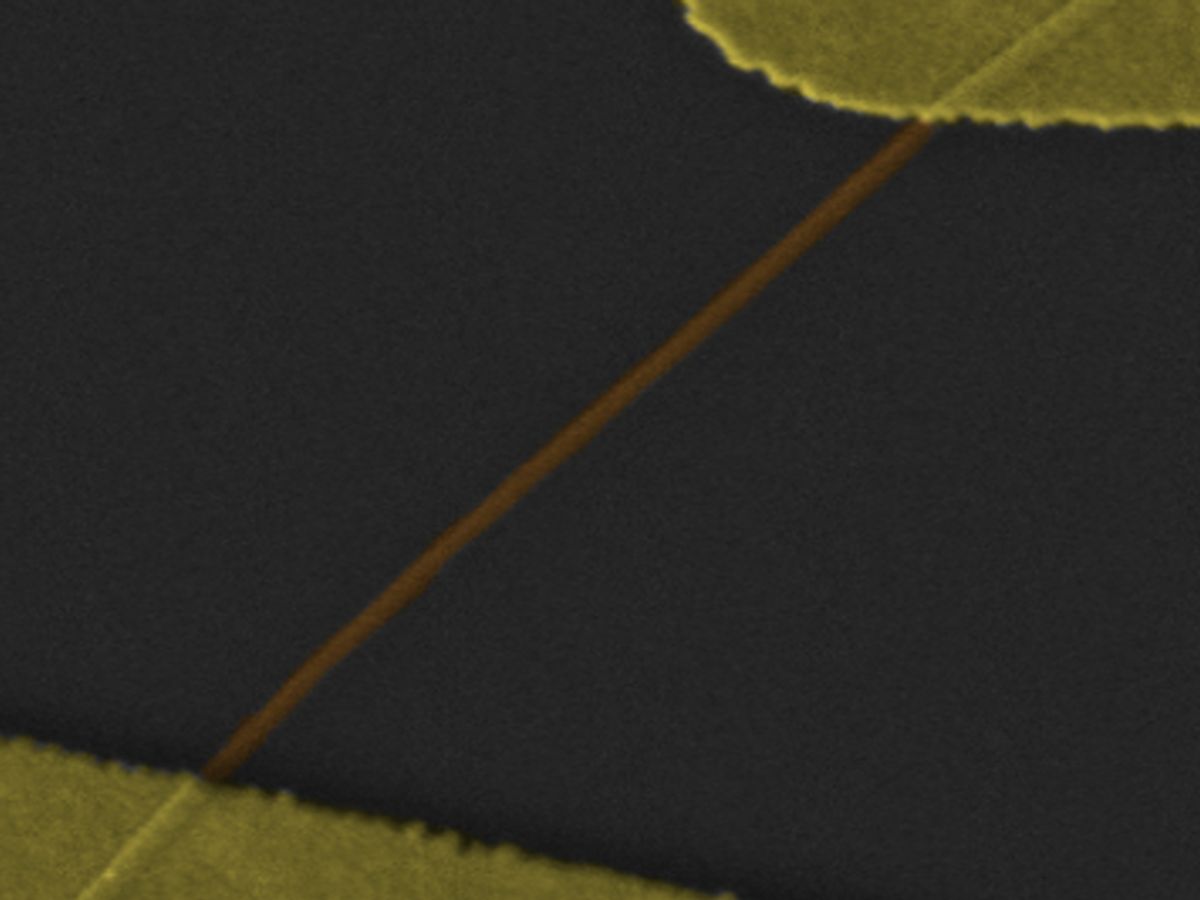The newest fundamental electronic component, the memristor, still holds some surprises, it seems. Since researchers built the first memristor six years ago, this mysterious device has promised a host of applications—denser nonvolatile memories, new universal logic gates, and brainlike computers, among other things. Add to these another, according to Trinity College Dublin physicists: base-10 memory.
Unlike transistor-based memories, which are designed to assume only binary states, the memristor can hold much more. The Trinity researchers constructed one that can remember six states, and there’s nothing to stop expanding that to 10 or more, they claim.
Instead of maintaining a bit as charge, the way flash and dynamic RAM do, memristors (or RRAM, for resistive RAM) hold memory as resistance. The device “remembers” the level of current that has flown through by altering its internal resistance. The resistance decreases when current flows in the other direction.
The Trinity memristor is a bit different. For one thing, unlike other memristors, it also acts as a diode: The resistance levels can be controlled only by current flowing in one direction. The diode effect comes from a postproduction processing step, called electroforming. The device consists of a titanium dioxide semiconducting nanowire sandwiched between two metal electrodes. Once the memristor is constructed, prolonged exposure to 10 volts boosts the population of charge carriers near the interface with the cathode, creating a diode junction.
Apart from conducting in one direction, the new memristor stores bits differently, too. A normal memristor would need two different voltages to store two different levels of resistance: “You apply 5 V and you get one resistance level; you apply 10 V and that gives you the other level,” says Curtis O’Kelly, a physicist at Trinity College, who with John Boland and Jessamyn Fairfield discovered the new properties. “In our device, you apply 7.5 V once, and that will take you up one resistance step, and when you apply another pulse of 7.5 V, that will take you up another step.” After six such pulses the researchers found that their device reached a saturated state, and no more changes in the resistance took place. You can stop at any level, which remains stored, and later apply another pulse, which will bring you to the next level, or you can reset the device by applying a single negative 7.5-V pulse, explains O’Kelly. Because the memristor is a diode, you can reset the memory cell without current flowing, something that cannot be done with a “normal” memristor, he says.
The researchers say that the mechanism of the memory effect can be explained by a physical change that takes place in the nanowire at the interface with the electrode. “When you apply a positive voltage to one of the contacts, you generate a population of oxygen vacancies—you are removing oxygen from the lattice of the wire—and this allows electrons” to move into the metal more easily, says O’Kelly. The negative 7.5-V pulse injects electrons from the gold electrode into the nanowire, destroying the oxygen vacancies at the interface and making the nanowire less conductive.
The number of levels of resistance is flexible, and the device could achieve 10. “The ultimate limit is the resolution between each level,” says O’Kelly.
Such a system makes O’Kelly imagine base-10 memories that can retain 10 different states per memory cell. Whether memory like that would be worthwhile in a universe of binary computing is questionable, of course. On the one hand, base-10 memory might be much more dense. For example, the largest unsigned binary 64-bit integer—18,446,744,073,709,551,615—could be held in 20 bits instead of 64. But interfacing base-10 memory with binary logic might defeat any gains. Electronics engineers would have to come up “with new infrastructure to deal with this new type of memory,” says O’Kelly.
Long before anyone contemplates redesigning computers around the Trinity memristor, that device will have to make some big gains. James Scott, a physicist at the University of Cambridge, compares the low speed of the device with that of “a hand-operated eighth-century abacus.”
Making the device smaller should help fix that problem, suggests Harika Manem, an electrical engineer at the State University of New York, Albany. Manem isn’t a believer in a future of base-10 computing, but she thinks that these multistate memristors could be very useful in one of her research interests—unconventional bioinspired logic systems based on neural networks. “What is nice is that their device has controllable states that are very repeatable and consistent, and if they scale it down, it should be more applicable,” she says.
About the Author
Alexander Hellemans covers science and technology in Europe. With Bryan Bunch, he is author of The History of Science and Technology: A Browser’s Guide to the Great Discoveries, Inventions, and the People Who Made Them from the Dawn of Time to Today (Houghton-Mifflin, 2004). In May 2014 he reported on an alternative fusion machine called a stellarator.
